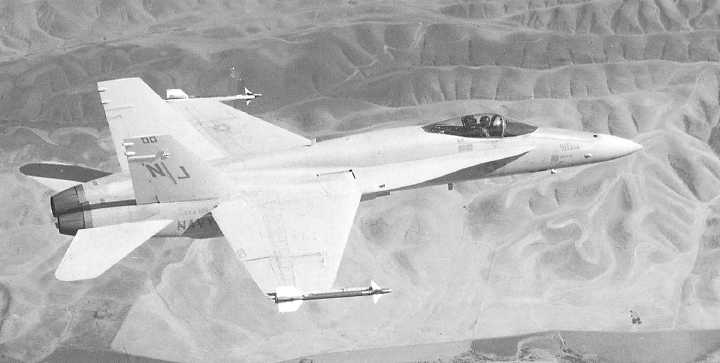| |
done by encasement of the first two stages in epoxied
graphite and the third stage in the filament-wound
Kevlar. The range of the missile was also increased
by the aerospike, a telescoping outward extension
that reduces frontal drag by about 50 percent. The
new Trident and Ohio classes of submarines carry 24
Trident II missiles that can be launched under water
or on the surface.
Upon firing, the Trident II is ejected by the
pressure of expanding gas within the launch tube.
When the missile reaches the proper distance from
the submarine, the first-stage motor ignites, the
aerospike extends, and the boost stage begins. After
about 65 seconds the first-stage motor and interstage
separate from the missile. This allows the second-
stage motor to ignite and continue the boost phase for
approximately 65 seconds. With separation, the third
stage burns for nearly 40 seconds, concluding the
boost phase. At this point the missile is traveling
more than 20,000 feet per second (13,600 mph). The
post-boost control system provides thrust and control
to the equipment sec-t ion until all reentry bodies
have been deployed.
Characteristics of the Trident II:
Length: 44 feet
Diameter: 83 inches
Weight: 130,000 pounds
Range: Over 4,000 nautical miles
TRIDENT I (C-4)
The Trident I (C-4), first deployed in 1979,
will remain on patrol until phased out in the late
1990s. This missile was designed to have the same
dimensions as the Poseidon (C-3) missile. This
enabled the existing Poseidon submarines as well as
the newer Trident submarines to use the Trident I.
Trident I has a range almost double that of the
Poseidon. It uses a three-stage, solid-fuel rocket
instead of the two-stage, solid-fuel rocket used by the
Poseidon.
Characteristics of the Trident I:
Length: 34 feet
Diameter: 74 inches
Weight: 73,000 pounds
Range: 4,000 nautical miles
POSEIDON (C-3)
The Poseidon (C-3) missile, though being
phased out, is still in active use in the Navy. The
Poseidon was the fourth missile in the Navy’s Fleet
Ballistic Missile Program. The physical dimensions of
the Poseidon are identical to the Trident 1. The key
differences are in weight, range, propulsion, and
warhead, all of which were improved in the Trident I
missile.
3.111
Figure 20-6.—An F/A-18 Hornet With Sidewinders missiles.
20-8
|

